-
 Bitcoin
Bitcoin $77,433.1414
-1.80% -
 Ethereum
Ethereum $1,476.7038
-5.48% -
 Tether USDt
Tether USDt $0.9995
0.00% -
 XRP
XRP $1.8592
-2.85% -
 BNB
BNB $557.3525
0.41% -
 USDC
USDC $1.0001
0.01% -
 Solana
Solana $105.8643
-1.23% -
 TRON
TRON $0.2312
1.06% -
 Dogecoin
Dogecoin $0.1454
-2.33% -
 Cardano
Cardano $0.5737
-1.52% -
 UNUS SED LEO
UNUS SED LEO $8.9990
0.67% -
 Toncoin
Toncoin $3.0110
-1.47% -
 Chainlink
Chainlink $11.0952
-2.91% -
 Stellar
Stellar $0.2261
-2.60% -
 Avalanche
Avalanche $16.3715
-3.21% -
 Sui
Sui $1.9656
-3.04% -
 Hedera
Hedera $0.1511
1.18% -
 Shiba Inu
Shiba Inu $0.0...01080
-5.42% -
 MANTRA
MANTRA $6.1857
-1.51% -
 Polkadot
Polkadot $3.4881
-3.46% -
 Bitcoin Cash
Bitcoin Cash $273.3496
-1.57% -
 Dai
Dai $1.0001
0.01% -
 Litecoin
Litecoin $69.5072
-2.11% -
 Ethena USDe
Ethena USDe $0.9988
0.00% -
 Bitget Token
Bitget Token $4.0462
-0.94% -
 Pi
Pi $0.5665
-3.71% -
 Hyperliquid
Hyperliquid $11.2793
0.58% -
 Monero
Monero $198.1478
-1.55% -
 Uniswap
Uniswap $4.9768
-2.89% -
 OKB
OKB $49.8739
-2.51%
區塊鏈中的第2層解決方案是什麼?如何提高可擴展性?
第2層區塊鏈解決方案(如狀態通道和匯總)通過處理交易後的鏈接來減輕第1層的限制,從而增加吞吐量和減少費用。
2025/03/03 05:36
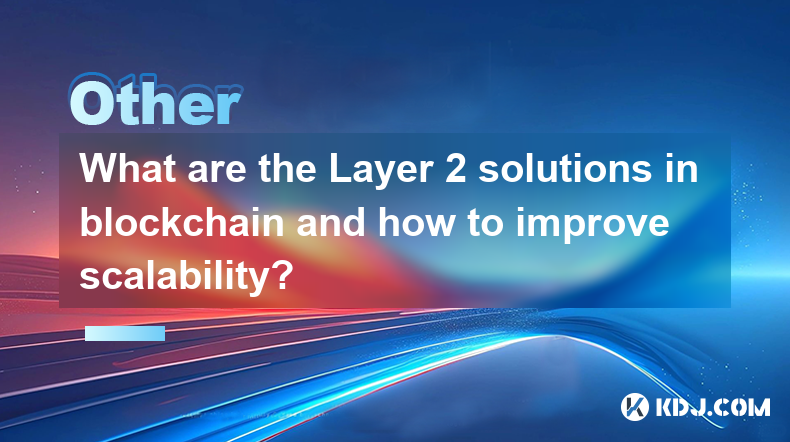
區塊鏈中的第2層解決方案是什麼?如何提高可擴展性?
要點:
- 了解第1層以及對第2層的需求:第1層區塊鏈(例如比特幣和以太坊)處理區塊鍊網絡的核心功能。但是,它們在交易吞吐量和處理速度方面的固有局限性通常會導致高交易費用和網絡擁塞。第2層解決方案旨在通過將某些交易處理從主鏈中移出來解決這些可擴展性問題。
- 第2層解決方案的類型:我們將探索幾個突出的第2層縮放解決方案,包括狀態通道,匯總(樂觀和ZK-SNARKS),SIDECHAINS和等離子體。每種都提供了一種不同的方法,可以在安全性,權力下放和復雜性方面通過不同的權衡取捨。
- 通過第2層提高可伸縮性:我們將深入研究每個第2層解決方案背後的技術機制,並解釋它們如何減輕主鏈的負擔,並最終增加交易吞吐量並減少費用。我們還將討論第2層空間內的正在進行的發展和創新。
- 選擇右第2層解決方案:最佳層2解決方案取決於特定的需求和優先級。要考慮的因素包括所需的安全級別,所需的權力下放水平,實施的複雜性以及所支持的應用程序的類型。
第2層解決方案解釋了:
- 州渠道:
想像一群想在自己之間反復交易的人。他們可以打開狀態渠道,而不是將每筆交易廣播到整個網絡(在第1層昂貴且緩慢)。該渠道的作用就像是私人脫鏈分類帳,參與者之間記錄了交易。只有通道的最終狀態(所有交易的淨結果)才寫入第1層區塊鏈。這大大減少了主鏈的負載。該過程涉及多個步驟:
* **Channel Opening:** Participants agree to open a state channel and deposit funds into a multi-signature smart contract on the Layer 1 blockchain. This contract acts as an escrow, holding the funds until the channel is closed. The initial state of the channel is recorded, showing the initial balances of each participant. This requires a Layer 1 transaction, but it's a one-time cost. The smart contract's code is carefully audited to ensure its security and correctness, mitigating the risk of fraud. The selection of participants is crucial, and the initial state must be meticulously verified by all parties involved. The security of the entire channel relies on the correctness of the smart contract and the honest participation of all parties. Any vulnerabilities in the smart contract or malicious behavior by participants can compromise the security of the channel. The process also involves defining the rules and parameters of the channel, ensuring all participants agree on the terms of their interactions. The smart contract will enforce these rules, preventing any disputes that might arise due to ambiguous terms. A robust and well-defined set of rules is critical for the smooth and secure operation of the state channel. * **Transaction Processing:** Participants exchange funds within the channel by updating their shared state. These updates are not immediately broadcast to the main chain, significantly improving transaction speed and reducing fees. This off-chain processing allows for a high volume of transactions without burdening the main network. Each transaction is digitally signed by the participants to ensure authenticity and prevent unauthorized modifications. The use of cryptographic techniques guarantees the integrity and immutability of the transactions within the channel. The participants can use various methods to ensure the integrity of the channel, such as using a trusted execution environment or a secure multi-party computation protocol. This protects the transactions from tampering and ensures that only authorized participants can update the channel's state. * **Channel Closing:** Once the participants have finished transacting, they close the channel. The final state of the channel is broadcast to the Layer 1 blockchain as a single transaction. This transaction updates the balances of the participants on the main chain, reflecting the net result of all the off-chain transactions. The closing process involves submitting a signed transaction to the Layer 1 network. This transaction contains the final state of the channel, which is verified by the Layer 1 network. The verification process ensures the integrity of the channel and prevents any disputes about the final balances. The closing process might involve a waiting period to allow for challenges and dispute resolutions. Once the waiting period is over, the funds are released to the participants according to the final state of the channel.- 滾動(樂觀和ZK-SNARKS):
匯總將多個交易捆綁到第1層的單個交易中。這大大減少了主鏈需要處理的單個交易數量。主要類型有兩種:
* **Optimistic Rollups:** These assume that all transactions within a batch are valid unless proven otherwise. A "fraud proof" mechanism allows anyone to challenge a potentially invalid transaction within a specified time window. If a fraud is proven, the rollup is reverted. This mechanism relies on economic incentives to deter malicious actors from submitting fraudulent transactions. The longer the challenge period, the more secure the system, but it also means longer delays in finalizing transactions. The process involves several stages: * **Transaction Batching:** Transactions are collected off-chain into a batch. This batch is then submitted to the Layer 1 blockchain as a single transaction. The batch includes all the necessary information to reconstruct the transactions, such as the transaction data, the sender's addresses, and the receiver's addresses. The transaction data is usually encoded in a compact format to reduce the size of the batch. This process is optimized to minimize the size of the batch and reduce the gas costs associated with submitting the batch to the Layer 1 blockchain. A key aspect of this process is ensuring the security and integrity of the transaction batch. This is achieved through cryptographic techniques and validation mechanisms to prevent malicious actors from tampering with the batch. * **State Transition:** The rollup executes the transactions in the batch off-chain. This creates a new state root, which is a cryptographic hash representing the updated state of the rollup. The state root is then submitted to the Layer 1 blockchain as part of the transaction. The state transition process involves updating the balances of the accounts involved in the transactions. The process also involves verifying the validity of the transactions to ensure that they comply with the rules of the blockchain. Any invalid transactions are rejected, and the state transition is rolled back to the previous state. The state transition process is highly optimized to ensure that it can process a large number of transactions efficiently. * **Fraud Proof:** A challenge period is initiated, during which anyone can submit a fraud proof to challenge the validity of a transaction within the batch. If a fraud proof is provided, the rollup is reverted, and the fraudulent transaction is removed. The fraud proof mechanism relies on cryptographic techniques and consensus mechanisms to ensure the security and integrity of the system. The challenge period is typically set to a reasonable length to allow enough time for fraud proofs to be submitted, but it is also designed to prevent excessive delays in transaction finalization. The system provides incentives for individuals to participate in the fraud proof process, encouraging them to report fraudulent activities and maintain the integrity of the system. * **ZK-SNARK Rollups:** These use zero-knowledge proofs to prove the validity of transactions without revealing the transaction details. This provides greater privacy and faster finality compared to optimistic rollups, as there is no need for a challenge period. However, they are more complex to implement. * **Transaction Batching and Proof Generation:** Transactions are batched off-chain, and a succinct zero-knowledge proof is generated to attest to the validity of the entire batch. This proof is significantly smaller than the entire transaction data, allowing for efficient transmission to the Layer 1 blockchain. The process of generating zero-knowledge proofs involves complex cryptographic techniques, ensuring that the proof does not reveal any information about the transactions other than their validity. The computational cost of generating these proofs can be substantial, and the choice of cryptographic primitives is critical to balancing efficiency and security. The proof generation process is highly optimized to reduce the computational overhead and ensure the timely generation of proofs. * **Proof Verification on Layer 1:** The succinct zero-knowledge proof is submitted to the Layer 1 blockchain, along with the state root representing the updated state of the rollup. The Layer 1 network verifies the proof using a dedicated verifier contract. This verification process is significantly faster and cheaper than verifying each individual transaction. The verifier contract is carefully designed to ensure its security and efficiency. The verification process involves checking the validity of the proof and the consistency of the state root. The verifier contract only needs to process the small proof, rather than the entire batch of transactions, which significantly reduces the computational load on the Layer 1 blockchain. * **State Update:** Once the proof is verified, the Layer 1 blockchain updates its state according to the new state root, reflecting the outcome of the transactions in the batch. This process is atomic, meaning that either all transactions in the batch are applied, or none are. This ensures the consistency and integrity of the blockchain state. The state update process is highly optimized to ensure its efficiency and speed. The process also includes mechanisms to prevent race conditions and other potential issues that could compromise the integrity of the blockchain state.- Sidechains:
Sidechains是獨立的區塊鏈,將其固定在主鏈中。他們可以擁有自己的共識機制和參數,從而可以提高靈活性和可擴展性。但是,與主鏈相比,他們通常會犧牲一定程度的安全性和權力下放。使用Sidechains的過程涉及:
* **Pegging:** A secure mechanism is required to transfer assets between the main chain and the sidechain. This usually involves locking assets on the main chain and minting corresponding tokens on the sidechain, and vice-versa. This process ensures that the value of the assets is preserved across both chains. The security of the pegging mechanism is critical, as any vulnerabilities could lead to the loss of assets. The process often involves cryptographic techniques and multi-signature schemes to ensure the integrity and security of the transactions. The choice of cryptographic primitives is crucial to balancing security and efficiency. * **Transaction Processing:** Transactions are processed on the sidechain, taking advantage of its potentially higher throughput and lower fees. The sidechain can have its own consensus mechanism, allowing for faster transaction processing. The choice of consensus mechanism depends on the specific requirements of the sidechain, balancing factors such as security, decentralization, and throughput. Proof-of-stake and delegated proof-of-stake are popular choices for sidechains due to their efficiency and scalability. * **Data Availability:** The sidechain needs to provide a mechanism to ensure the availability of transaction data. This is crucial for ensuring that the transactions on the sidechain can be audited and verified. Different mechanisms can be used to ensure data availability, such as using a distributed hash table or a network of nodes. The choice of data availability mechanism depends on the specific requirements of the sidechain, balancing factors such as security, availability, and cost.- 電漿:
等離子體是建造可擴展兒童區塊鏈的框架,這些區塊鏈由父鏈(通常是主鏈)固定。等離子體鏈可以獨立處理交易,但父鏈充當爭議的最終仲裁者。這種方法在可擴展性和安全性之間提供了平衡。實施涉及:
* **Child Chain Creation:** A child chain is created as a separate blockchain that operates independently from the main chain. This child chain can have its own consensus mechanism and parameters, allowing for higher throughput and lower fees. The creation process involves deploying a smart contract on the main chain that governs the rules and operations of the child chain. The smart contract is carefully audited to ensure its security and correctness. * **Transaction Processing:** Transactions are processed on the child chain, taking advantage of its potentially higher throughput and lower fees. The child chain can have its own consensus mechanism, allowing for faster transaction processing. The choice of consensus mechanism depends on the specific requirements of the child chain, balancing factors such as security, decentralization, and throughput. * **Exit Mechanism:** A mechanism is needed to allow users to withdraw their assets from the child chain to the main chain. This exit mechanism is crucial for ensuring that users can access their funds at any time. The exit mechanism usually involves a waiting period and a challenge period to allow for dispute resolution. The design of the exit mechanism is critical for balancing security and usability. A well-designed exit mechanism ensures that users can withdraw their funds quickly and securely without compromising the security of the system. The exit mechanism must be robust and resilient to attacks, and it must also be easy for users to understand and use.常見問題解答:
問:第1層和第2層解決方案之間有什麼區別?
答:第1層是指基礎區塊鏈協議(例如,以太坊,比特幣)。它處理核心功能,例如共識,安全和交易驗證。第2層解決方案是在第1層頂部構建的,以通過將一些處理到外部網絡來提高可擴展性。第1層仍然是安全性和最終結局的最終來源。
問:哪個第2層解決方案是最好的?
答:沒有單個“最佳”第2層解決方案。理想的選擇取決於特定應用程序的需求,優先考慮安全性,權力下放,交易速度和復雜性等因素。樂觀的匯總為許多應用提供了良好的平衡,而ZK-SNARKS則提供了更強的隱私和更快的終結性,但更為複雜。國家通道表現出色,可在小組之間進行頻繁的交易,而側chain則具有靈活性,但可能會損害權力下放。
問:2層解決方案如何提高可伸縮性?
答:第2層解決方案通過處理交易後的鏈外交易來減輕第1層區塊鏈的負擔。這導致交易吞吐量增加,交通擁堵減少和交易費用下降。他們通過不同的機制,例如批處理交易(匯總),創建私人通道(狀態通道)或使用單獨的鏈(Sidechains和等離子體)來實現這一目標。
問:第2層解決方案是否安全?
答:第2層解決方案的安全性取決於特定的實現和基礎第1層安全性。儘管它們經常提高可擴展性,但它們可能會引入新的漏洞或依賴性。但是,許多第2層解決方案都結合了強大的安全機制,例如欺詐證明(樂觀的匯總)或零知識證明(ZK-SNARKS),以保持高度的安全性。第1層區塊鏈的安全性仍然是第2層解決方案總體安全性的關鍵因素。
問:第2層解決方案的局限性是什麼?
答:第2層解決方案不是靈丹妙藥。他們可以從實施和用戶體驗方面引入複雜性。一些解決方案可能需要特定的技術專長來建立和管理。其他人可能會對他們可以處理的交易類型或他們可以提供的權力下放水平有局限性。此外,第2層解決方案的安全性通常取決於基礎第1層區塊鏈的安全性。第1層區塊鏈的折衷可能會影響在其頂部構建的第2層解決方案的安全性。某些第2層解決方案的複雜性也可以使它們對普通用戶的訪問範圍降低,從而可能限制其採用。最後,不同層解決方案之間的互操作性仍然是一個挑戰,因為不同的解決方案可能使用不同的協議和標準。
這種詳細的解釋提供了加密貨幣空間中第2層縮放解決方案的全面概述。請記住,該領域在不斷發展,並且不斷開發新的解決方案和改進。
免責聲明:info@kdj.com
所提供的資訊並非交易建議。 kDJ.com對任何基於本文提供的資訊進行的投資不承擔任何責任。加密貨幣波動性較大,建議您充分研究後謹慎投資!
如果您認為本網站使用的內容侵犯了您的版權,請立即聯絡我們(info@kdj.com),我們將及時刪除。
- PI Network(PI)的價格預測4月8日:PI會再次達到3美元嗎?
- 2025-04-09 02:50:12
- Revolut上的$ Taiko列表為以太坊的第一個基礎匯總打開了4500萬新用戶
- 2025-04-09 02:50:12
- 隨著創紀錄的令牌移出流通,Zcash(ZEC)達到35.69美元的高價
- 2025-04-09 02:45:13
- 模因硬幣空間再次嗡嗡作響,這一次,不僅僅是關於狗,貓或青蛙
- 2025-04-09 02:45:13
- CELO從1層鏈到以太坊層2方案過渡
- 2025-04-09 02:40:13
- Binance從做市商那裡凍結了3800萬美元,該公司售出了6600萬個移動(移動)令牌
- 2025-04-09 02:40:13
相關知識
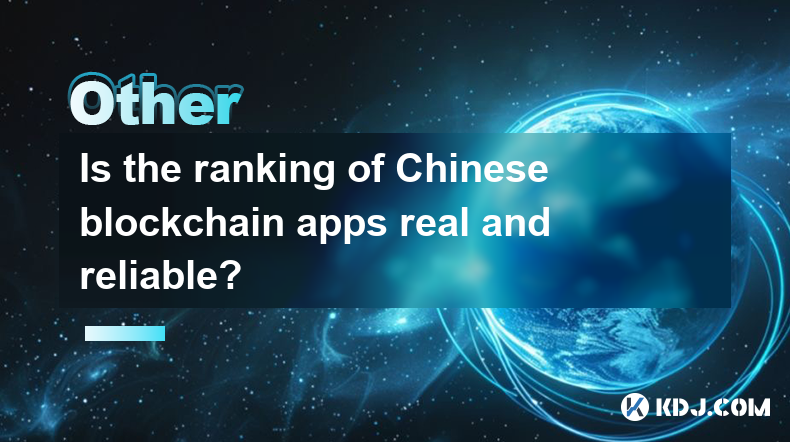
中國區塊鏈應用程序的排名是真正可靠的嗎?
2025-04-04 21:01:07
中國區塊鏈應用程序的排名已成為加密貨幣社區中許多人的關注主題,因為它為中國境內的區塊鏈技術的受歡迎程度和採用提供了見解。但是,這些排名的可靠性和真實性經常受到質疑。本文旨在研究影響這些排名的因素,不同排名平台使用的方法以及可能影響其準確性的潛在偏見。通過了解這些要素,我們可以更好地評估中國區塊鏈應用程序的排名是真實且可靠的。影響中國區塊鏈應用排名的因素幾個因素有助於中國區塊鏈應用的排名。其中包括用戶參與度,交易量,市值以及應用程序對區塊鏈生態系統的總體影響。用戶參與通常是通過活動用戶的數量及其與應用程序交互的頻率來衡量的。交易量反映了該應用程序的效用和採用率,而市值表示財務價值和投資者對應用程序的信心。此外,該應用程序對更廣泛的區塊鏈生態系統的影響,例如其對技術進步或法規合規性的貢獻也可能影響其排名。...
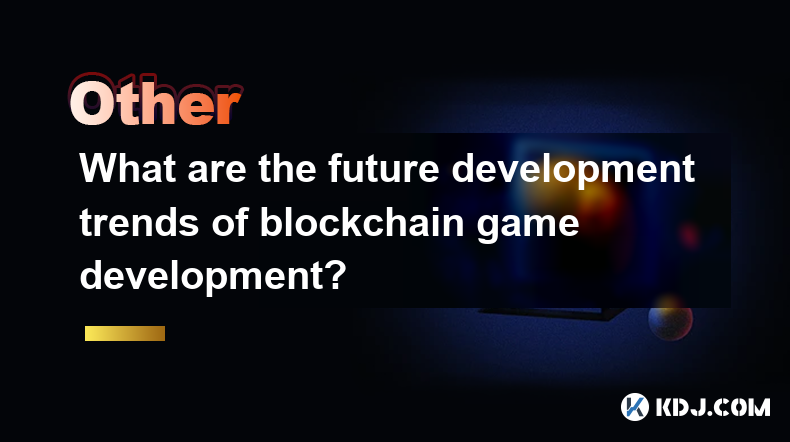
區塊鏈遊戲開發的未來發展趨勢是什麼?
2025-04-03 05:00:49
區塊鏈技術徹底改變了各種行業,遊戲也不例外。當我們展望未來時,幾種趨勢將塑造區塊鏈遊戲的開發。這些趨勢不僅有望增強遊戲體驗,而且還可以將區塊鏈技術更加接縫地整合到遊戲生態系統中。讓我們詳細探討這些趨勢。 NFT在遊戲中的集成區塊鏈遊戲開發中最重要的趨勢之一是不可殺死的令牌(NFTS)的整合。 NFT允許玩家在遊戲中擁有獨特的數字資產,可以在遊戲環境之外進行交易或出售。隨著越來越多的開發人員認識到NFT的潛力增強球員參與並通過比賽獲利,這種趨勢將增長。 NFT為玩家提供了遊戲中項目的真正所有權,從而使遊戲體驗更加有意義。交易NFT的市場變得越來越普遍,使玩家可以輕鬆購買,出售和交易資產。 NFT可以在多個遊戲中使用,從而增加了它們對玩家的價值和實用性。遊戲之間增強的互操作性要觀看的另一個趨勢是不同區塊鏈...
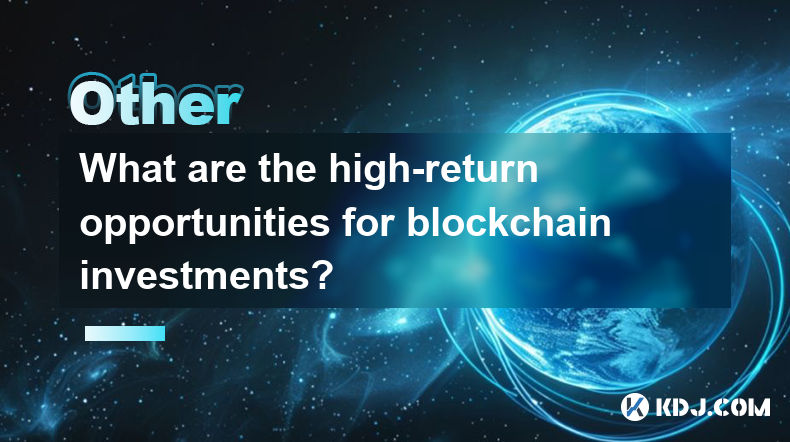
區塊鏈投資的高回報機會是什麼?
2025-04-05 14:35:28
區塊鏈技術徹底改變了金融世界,提供了許多高回報的投資機會。這些機會涵蓋了加密貨幣生態系統中的各個部門,包括加密貨幣,分散融資(DEFI),無殺菌令牌(NFTS)和區塊鏈創業公司。這些領域中的每一個都帶來了獨特的風險和獎勵,並理解它們可以幫助投資者做出明智的決定。本文將探討區塊鏈投資格局中可用的高回報機會,詳細介紹與每種相關的潛在收益和挑戰。加密貨幣加密貨幣也許是最著名的區塊鏈投資機會。 Bitcoin,以太坊和其他主要加密貨幣為早期投資者提供了可觀的回報。加密市場的波動性意味著,儘管高回報的潛力很大,但風險也是如此。投資者可以選擇購買和持有,積極交易,甚至危害某些加密貨幣以賺取被動收入。多樣化您的投資組合:投資一系列加密貨幣可以幫助減輕風險。請繼續了解:跟上市場趨勢,新聞和技術發展。使用安全平台:確保...
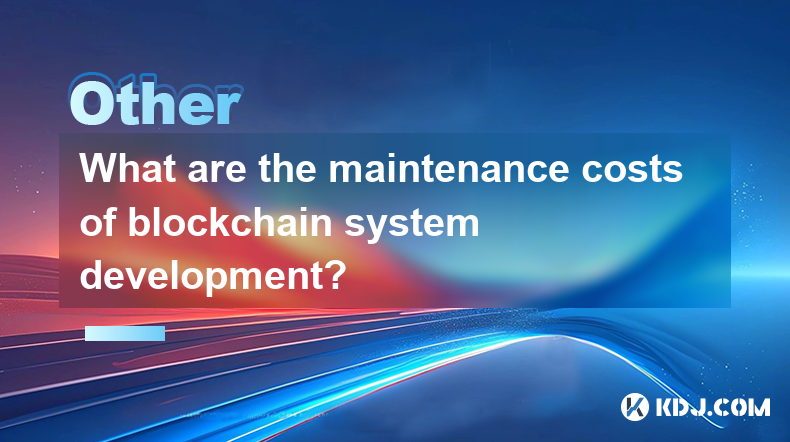
區塊鏈系統開發的維護成本是多少?
2025-04-03 18:07:51
區塊鏈系統開發的維護成本是多方面的,取決於各種因素。這些費用可以包括技術維護,安全更新,基礎設施費用和人員費用。了解這些要素對於計劃開發或維護區塊鏈系統的任何人至關重要。技術維護技術維護是整體維護成本的重要組成部分。這涉及對區塊鏈軟件的定期更新,以確保其與其他系統保持兼容並修復可能出現的任何錯誤。軟件更新:需要定期更新以使系統順利運行。這些更新可能是次要的補丁或大修,具體取決於確定的問題。錯誤修復:識別和解決錯誤是一個持續的過程。這需要一個專用的團隊來監視系統並根據需要實施修復程序。兼容性:確保區塊鏈與其他系統保持兼容,並且軟件至關重要。這可能涉及更新API或其他接口。安全更新安全性在區塊鏈系統中至關重要,並且維持高安全標準會帶來巨大的成本。脆弱性評估:定期評估對於確定潛在的安全弱點是必要的。這涉及僱...
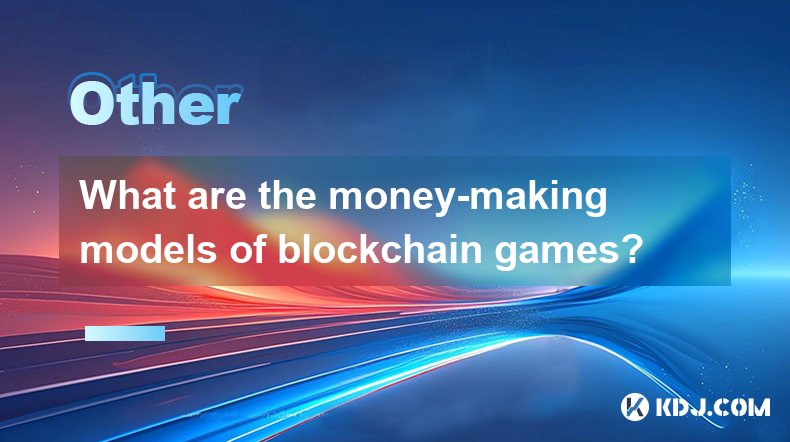
區塊鏈遊戲的賺錢模型是什麼?
2025-04-04 14:00:57
區塊鏈遊戲已成為玩家在享受自己喜歡的消遣時賺錢的革命性方式。這些遊戲利用區塊鏈技術的力量創建獨特的賺錢模型,使玩家和開發人員都受益。在本文中,我們將探討區塊鏈遊戲的各種賺錢模型及其工作方式。遊戲到歐文模型遊戲到歐文模型也許是區塊鏈遊戲中最受歡迎,最廣泛採用的賺錢模型。在此模型中,玩家因參加遊戲中的各種活動而獲得了加密貨幣或遊戲內代幣的獎勵。可以通過完成任務,擊敗對手或實現特定里程碑來獲得這些獎勵。玩家可以定期玩遊戲並完成遊戲中的任務來賺取令牌。賺取的令牌可以在加密貨幣交易所以現實世界的錢進行交易。一些遊戲使玩家可以隨著時間的推移獲得代幣獲得額外的獎勵。產生耕種產量耕作是區塊鏈遊戲中的另一個流行的賺錢模式,尤其是在分散的金融(DEFI)遊戲中。在此模型中,玩家可以通過為遊戲的生態系統提供流動性來贏得獎勵...
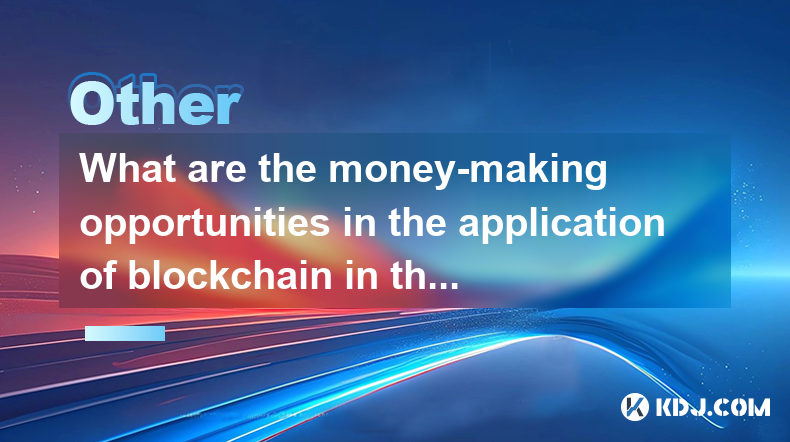
在物聯網領域應用區塊鏈方面有什麼賺錢的機會?
2025-04-05 22:35:56
區塊鏈技術與物聯網(IoT)的集成提供了許多賺錢的機會。區塊鏈具有分散和安全的性質,可以徹底改變物聯網設備的交互,管理數據和進行交易的方式。本文將探討企業家,開發商和投資者可以利用這種協同作用的各種途徑,重點關注智能合約,數據完整性,供應鏈管理等領域。了解這些機會可以幫助利益相關者做出明智的決定,並開發創新的解決方案來利用這兩種技術的優勢。物聯網設備的智能合約區塊鏈在物聯網中最有希望的應用之一是使用智能合約。智能合約是與直接寫入代碼的條款的自我執行合同。與IoT設備集成時,這些合同可以自動化各種流程和交易,而無需中介。自動付款:在滿足某些條件時,IoT設備可以自動觸發付款,例如完成的交付或提供服務。這在物流和公用事業等行業中尤其有用。維護和維修:智能合約可以為物聯網設備安排和自動化維護或維修服務,以確...

中國區塊鏈應用程序的排名是真正可靠的嗎?
2025-04-04 21:01:07
中國區塊鏈應用程序的排名已成為加密貨幣社區中許多人的關注主題,因為它為中國境內的區塊鏈技術的受歡迎程度和採用提供了見解。但是,這些排名的可靠性和真實性經常受到質疑。本文旨在研究影響這些排名的因素,不同排名平台使用的方法以及可能影響其準確性的潛在偏見。通過了解這些要素,我們可以更好地評估中國區塊鏈應用程序的排名是真實且可靠的。影響中國區塊鏈應用排名的因素幾個因素有助於中國區塊鏈應用的排名。其中包括用戶參與度,交易量,市值以及應用程序對區塊鏈生態系統的總體影響。用戶參與通常是通過活動用戶的數量及其與應用程序交互的頻率來衡量的。交易量反映了該應用程序的效用和採用率,而市值表示財務價值和投資者對應用程序的信心。此外,該應用程序對更廣泛的區塊鏈生態系統的影響,例如其對技術進步或法規合規性的貢獻也可能影響其排名。...

區塊鏈遊戲開發的未來發展趨勢是什麼?
2025-04-03 05:00:49
區塊鏈技術徹底改變了各種行業,遊戲也不例外。當我們展望未來時,幾種趨勢將塑造區塊鏈遊戲的開發。這些趨勢不僅有望增強遊戲體驗,而且還可以將區塊鏈技術更加接縫地整合到遊戲生態系統中。讓我們詳細探討這些趨勢。 NFT在遊戲中的集成區塊鏈遊戲開發中最重要的趨勢之一是不可殺死的令牌(NFTS)的整合。 NFT允許玩家在遊戲中擁有獨特的數字資產,可以在遊戲環境之外進行交易或出售。隨著越來越多的開發人員認識到NFT的潛力增強球員參與並通過比賽獲利,這種趨勢將增長。 NFT為玩家提供了遊戲中項目的真正所有權,從而使遊戲體驗更加有意義。交易NFT的市場變得越來越普遍,使玩家可以輕鬆購買,出售和交易資產。 NFT可以在多個遊戲中使用,從而增加了它們對玩家的價值和實用性。遊戲之間增強的互操作性要觀看的另一個趨勢是不同區塊鏈...

區塊鏈投資的高回報機會是什麼?
2025-04-05 14:35:28
區塊鏈技術徹底改變了金融世界,提供了許多高回報的投資機會。這些機會涵蓋了加密貨幣生態系統中的各個部門,包括加密貨幣,分散融資(DEFI),無殺菌令牌(NFTS)和區塊鏈創業公司。這些領域中的每一個都帶來了獨特的風險和獎勵,並理解它們可以幫助投資者做出明智的決定。本文將探討區塊鏈投資格局中可用的高回報機會,詳細介紹與每種相關的潛在收益和挑戰。加密貨幣加密貨幣也許是最著名的區塊鏈投資機會。 Bitcoin,以太坊和其他主要加密貨幣為早期投資者提供了可觀的回報。加密市場的波動性意味著,儘管高回報的潛力很大,但風險也是如此。投資者可以選擇購買和持有,積極交易,甚至危害某些加密貨幣以賺取被動收入。多樣化您的投資組合:投資一系列加密貨幣可以幫助減輕風險。請繼續了解:跟上市場趨勢,新聞和技術發展。使用安全平台:確保...

區塊鏈系統開發的維護成本是多少?
2025-04-03 18:07:51
區塊鏈系統開發的維護成本是多方面的,取決於各種因素。這些費用可以包括技術維護,安全更新,基礎設施費用和人員費用。了解這些要素對於計劃開發或維護區塊鏈系統的任何人至關重要。技術維護技術維護是整體維護成本的重要組成部分。這涉及對區塊鏈軟件的定期更新,以確保其與其他系統保持兼容並修復可能出現的任何錯誤。軟件更新:需要定期更新以使系統順利運行。這些更新可能是次要的補丁或大修,具體取決於確定的問題。錯誤修復:識別和解決錯誤是一個持續的過程。這需要一個專用的團隊來監視系統並根據需要實施修復程序。兼容性:確保區塊鏈與其他系統保持兼容,並且軟件至關重要。這可能涉及更新API或其他接口。安全更新安全性在區塊鏈系統中至關重要,並且維持高安全標準會帶來巨大的成本。脆弱性評估:定期評估對於確定潛在的安全弱點是必要的。這涉及僱...

區塊鏈遊戲的賺錢模型是什麼?
2025-04-04 14:00:57
區塊鏈遊戲已成為玩家在享受自己喜歡的消遣時賺錢的革命性方式。這些遊戲利用區塊鏈技術的力量創建獨特的賺錢模型,使玩家和開發人員都受益。在本文中,我們將探討區塊鏈遊戲的各種賺錢模型及其工作方式。遊戲到歐文模型遊戲到歐文模型也許是區塊鏈遊戲中最受歡迎,最廣泛採用的賺錢模型。在此模型中,玩家因參加遊戲中的各種活動而獲得了加密貨幣或遊戲內代幣的獎勵。可以通過完成任務,擊敗對手或實現特定里程碑來獲得這些獎勵。玩家可以定期玩遊戲並完成遊戲中的任務來賺取令牌。賺取的令牌可以在加密貨幣交易所以現實世界的錢進行交易。一些遊戲使玩家可以隨著時間的推移獲得代幣獲得額外的獎勵。產生耕種產量耕作是區塊鏈遊戲中的另一個流行的賺錢模式,尤其是在分散的金融(DEFI)遊戲中。在此模型中,玩家可以通過為遊戲的生態系統提供流動性來贏得獎勵...

在物聯網領域應用區塊鏈方面有什麼賺錢的機會?
2025-04-05 22:35:56
區塊鏈技術與物聯網(IoT)的集成提供了許多賺錢的機會。區塊鏈具有分散和安全的性質,可以徹底改變物聯網設備的交互,管理數據和進行交易的方式。本文將探討企業家,開發商和投資者可以利用這種協同作用的各種途徑,重點關注智能合約,數據完整性,供應鏈管理等領域。了解這些機會可以幫助利益相關者做出明智的決定,並開發創新的解決方案來利用這兩種技術的優勢。物聯網設備的智能合約區塊鏈在物聯網中最有希望的應用之一是使用智能合約。智能合約是與直接寫入代碼的條款的自我執行合同。與IoT設備集成時,這些合同可以自動化各種流程和交易,而無需中介。自動付款:在滿足某些條件時,IoT設備可以自動觸發付款,例如完成的交付或提供服務。這在物流和公用事業等行業中尤其有用。維護和維修:智能合約可以為物聯網設備安排和自動化維護或維修服務,以確...
看所有文章




















































































